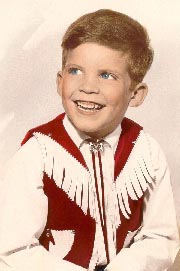A check-in on the Banjo versus TV project — J.R.'s ongoing plan to spend more time on his banjo than on TV. This post covers 3/15/2009 through 3/21/2009.

Things I learned at this week's banjo lesson:
- I'm starting to do a morning bluegrass session with a developer at work. He's an accomplished guitar player who has his own band and who wants to learn bluegrass mandolin. So most of this week's banjo lesson dealt with the question of how to play banjo alongside a mandolin.
- Dave recommends that any mandolin player ought to listen to the masters: Bill Monroe and Jethro.
- Dave says I'll want to capo to A, mostly, and play a lot of fiddle tunes. The mandolin is usually tuned to GDAE, the same as a fiddle. Most fiddle tunes are in A, some in D and a few in G or C.
- Most fiddle tunes have an A part and a B part and go AABB.
- The mandolin player is a more accomplished musician than I am, although I've currently got more bluegrass study than he does. This will be good for me. I might want to show him some of my good tunes and we can work on those, since I'll have a head start there. (My good tunes, currently: Good Old Mountain Dew, This Land is Your Land, Will The Circle Be Unbroken, Do Lord, and Hand Me Down My Walking Cane. I'm getting there on Wabash Cannonball.)
- We explored Cripple Creek. Note: I might be the only banjo player who really doesn't know Cripple Creek. It's like being a pianist who doesn't know Chopsticks. So Dave set me up with a copy of Cripple Creek from Tony Trischka's book, Melodic Banjo. The tablature was kind of hard for me to follow, as it puts the notes between the lines and not on the lines like I'm used to.


No comments:
Post a Comment